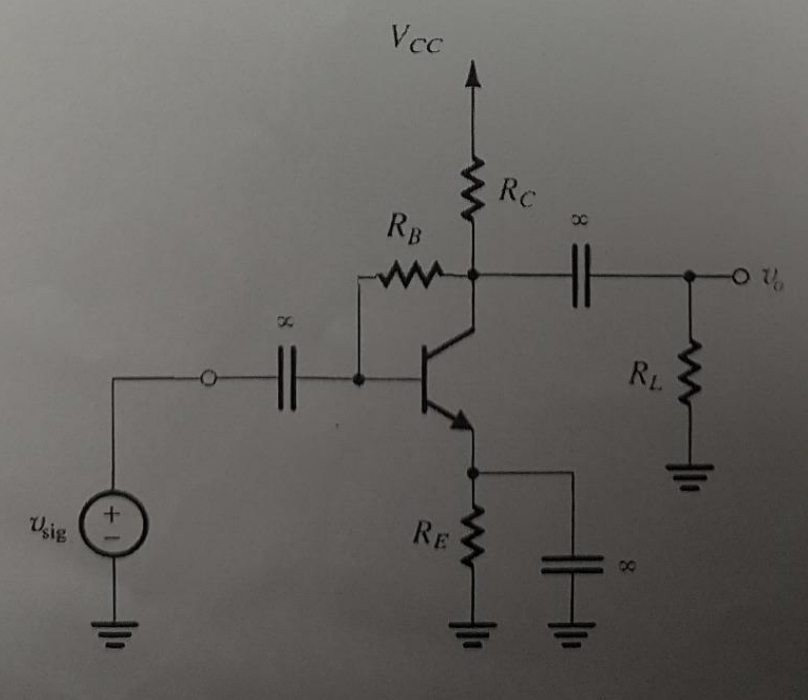In the amplifier circuit diagram, given that the BJT has β≫1 and ro ≠ ∞, answer the following questions. (12 points) (a) Derive the expressions for ICQ and VCEQ at the operating point of the BJT. (4 points) (b) Draw the small-signal equivalent circuit of the amplifier. (2 points) (c) Derive the expressions for the input resistance (Rin) and voltage gain (Av) of the amplifier. (6 points)

